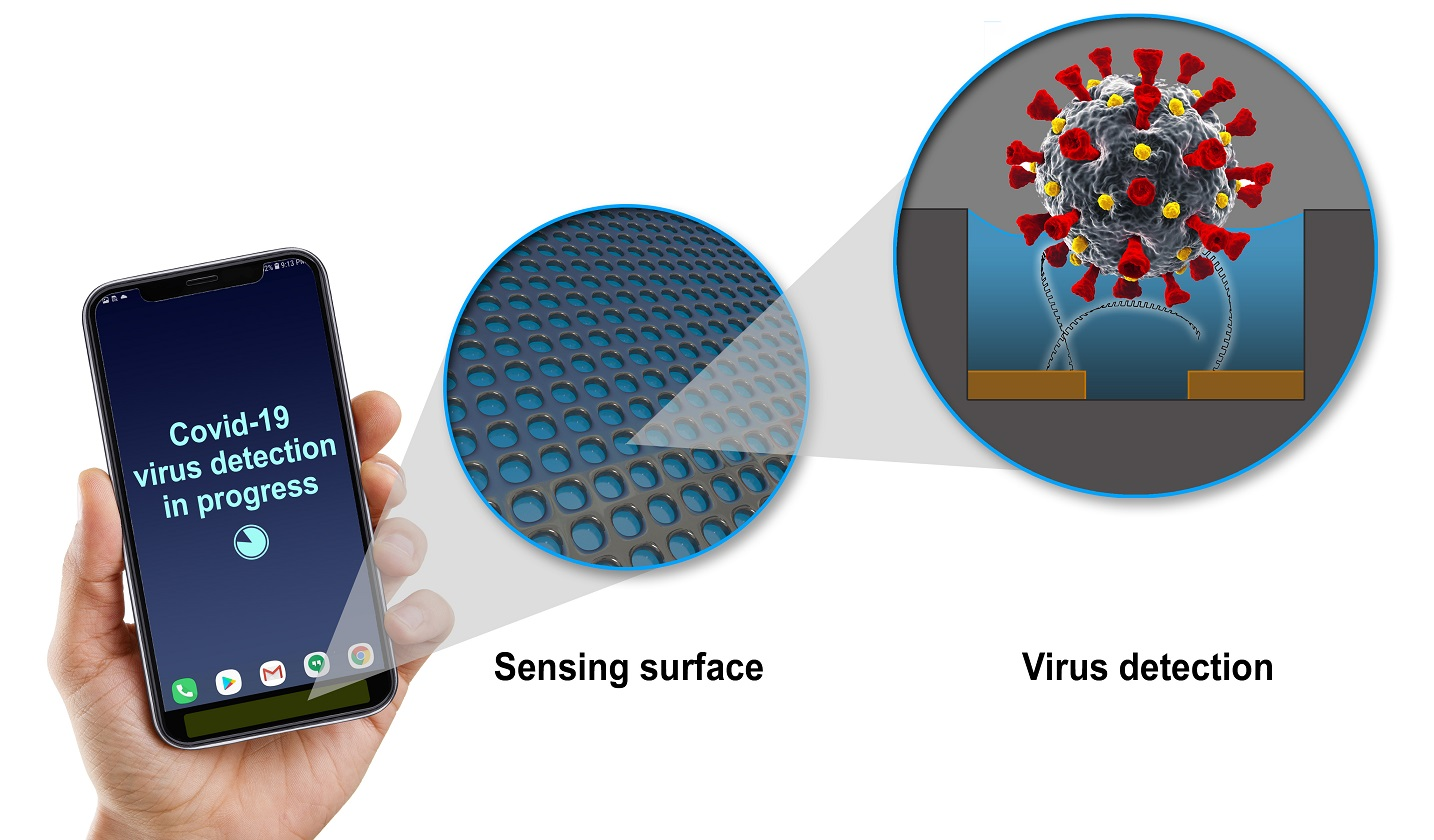GE scientists develop technology adding COVID-19 virus detector to mobile devices
“One of the first lines of defense against any virus is avoiding exposure, which is easier said than done when you can’t see it,” said Radislav Potyrailo, a principal scientist at GE Research and principal investigator on the National Institutes of Health (NIH) project. “Through our project with the NIH, we are developing a sensor small enough to embed in a mobile device that could detect the presence of the COVID-19 virus.”
Potyrailo added, “We all come into contact with different surfaces during any given day, from computer screens and conference tables to kiosks at the airport and credit card machines at stores while running errands. While everyone does a great job keeping these surfaces clean, we want to add an extra layer of safety by being able to detect the presence of the virus.”
 |
| GE develops technology helping to detect COVID-19 on different surfaces |
Over the past decade, Potyrailo and the sensing teams at GE Research have made tremendous strides in developing miniaturised sensing technologies that deliver the superior performance and acute sensing capabilities similar to high-end, large analytical instruments found in a typical lab.
| The sensing team will demonstrate the detection of a few nano-particles of concern such as those related to the COVID-19 in the presence of diverse kinds of common interferences. |
“We have developed tiny sensors smaller than a fingertip that have the same detection capabilities as the high-end analytical instruments the size of a microwave oven,” Potyrailo added. “By delivering this exquisite detection capability of a conventional high-end analytical instrument in such a small form factor, we can now consider sensing applications that you could envision being implemented as a sensor surface on a mobile phone or on a device even smaller than that.”
Potyrailo noted that the breakthrough sensing technology being developed is extremely reliable and good at isolating the detection without the interference of other elements. “Our sensors are sort of like bloodhounds,” Potyrailo added. “We train them to detect a specific thing and they are able to do that well without being thrown off the trail by something else."
As part of the two-year project, the sensing team will demonstrate the reliable detection of a few nano-particles of concern such as those related to the COVID-19 in the presence of diverse kinds of common interferences.
What the stars mean:
★ Poor ★ ★ Promising ★★★ Good ★★★★ Very good ★★★★★ Exceptional
Themes: Healthcare Platform
- Sandoz Vietnam doubles down to combat AMR in second year of campaign
- Pfizer Vietnam hosts symposia on pediatric pneumococcal disease
- University of Medicine and Pharmacy develops vaccinology postgrad course
- Flu wave hits Southeast Asia, highlighting gaps in protection for the elderly
- Vantive launches in Vietnam to expand kidney care access
Related Contents
Latest News
More News
- Addressing Vietnam's energy challenges with aeroderivative gas turbines (February 28, 2023 | 09:33)
- How to sprint ahead in 2023’s worldwide energy priorities (February 08, 2023 | 13:55)
- Boosting Vietnam's grid stability through gas turbine technology (November 22, 2022 | 20:02)
- Healthcare trio collaborates to provide thousands of free breast scans (October 27, 2022 | 17:19)
- GE Healthcare's vision for AI-backed radiology (September 29, 2022 | 11:53)
- GE brand trio to shape the future of key industries (July 19, 2022 | 15:35)
- GE unveiling brand names and defining future (July 19, 2022 | 15:16)
- GE: the shortest route towards sustainability (July 18, 2022 | 08:00)
- Be proactive in an uncertain world (May 20, 2022 | 11:40)
- GE secures first 9HA combined cycle power plant order in Vietnam (May 16, 2022 | 17:06)

 Tag:
Tag:



























 Mobile Version
Mobile Version